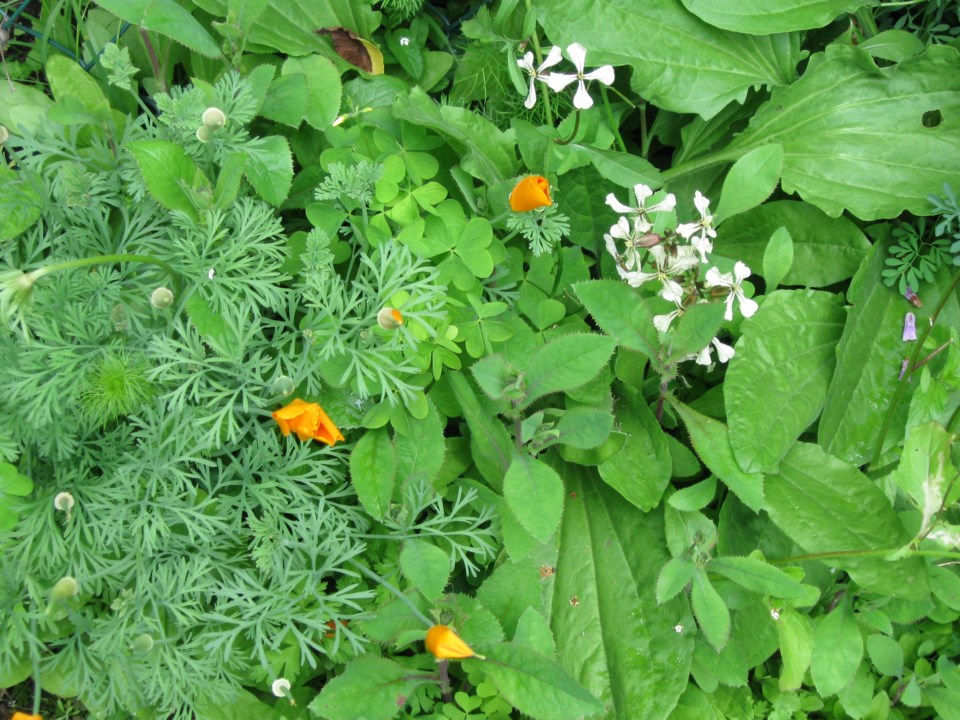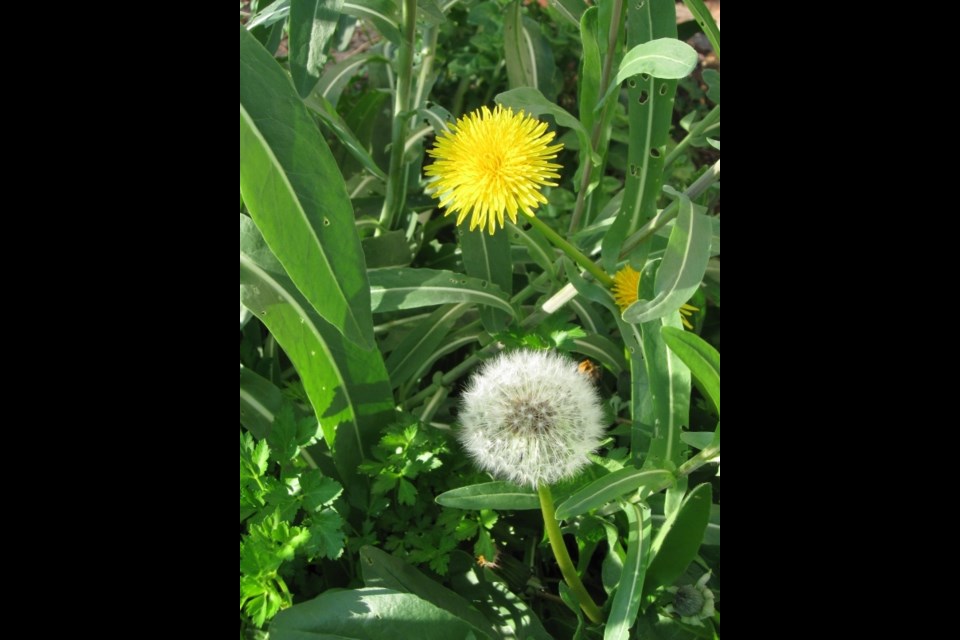After a long war fought with glyphosate weapons, many of us seem to have declared the Peace of Weeds. Last week I visited one of Richmond’s older residential areas, north of Lansdowne. Several original houses survive, surrounded by grass not blacktop. One house appeared to be floating on a sea of yellow – a sea of dandelions. I’ve never encountered them in such profusion. The week before, in Vancouver, I’d seen formal garden beds with no vegetation except dandelions, growing in a precise pattern – in other words, planted by a gardener.
When I was young, I believed dandelions were the most offensive plants you could find in a yard, mainly because my father had been one of their fiercest enemies. When he saw their yellow flowers, he became as enraged as a bull that sees red. He had a special tool for evicting them. Consequently, our dandelions started to grow horizontally, slinking along the ground, seeking camouflage between blades of grass. Now, many years later, some on the lawn are still a bit leery (an 18th-century word, originally slang for suspicious), but most hold their heads high – they sense they’ve nothing to fear from me, neither a special tool nor killer chemicals.

Europeans are more familiar with the qualities of the dandelion than we are, as I’ve described in an earlier column. You probably know that the dandelion is one of the first spring flowers to provide pollen and nectar, but did you also know that it does wonders for the soil? It helps the soil structure, and its long tap root collects potassium, phosphorus, calcium, copper, iron, magnesium and silicon, making them available to shallow-rooted vegetation and releasing them in to the soil as it decomposes. Furthermore, many parts of the plant are edible. Young dandelion leaves, rich in beta carotene, and vitamins A and C, are a tasty addition to salad; the flowers can be fried in batter.
Another plant maligned as undesirable but which actually deserves our gratitude is plantain. Its healing powers, thanks to active constituents that include aucubin, allantoin and mucilage, have long been recognized. The leaves, providing calcium and other minerals as well as vitamins A, C and K, can be eaten raw or cooked.
Occasionally I’ve extracted weeds from a spot where I wanted to grow vegetables. Their usefulness doesn’t end once they’re out of the ground. Making sure I get the entire root system when I pull them out, I let the weeds dry in the sun for a few days, after which I compost them or cover them with water to brew a mineral-rich tea for my garden.
Centuries ago, people valued weeds largely because they nourished and healed us. Given the chance, they can also become caretakers of the garden. In the last few years I’ve let the low growing weeds – such as daisies, plantain, chickweed, prunella, clover – form a ground cover for the wild flower areas. Left on their own, they do the work in perfect harmony. Naturally!
Sabine Eiche is a writer and art historian



